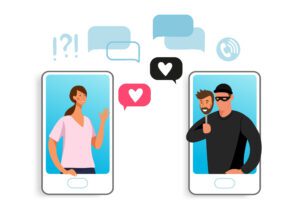When the Internet was developed in the 1960s and 1970s by the Defense Advanced Research Projects Agency (DARPA), it was designed to solve the problem of connecting machines to share information across multiple networks. DARPA’s solution — which is still in place today — was to exchange packets of data using the TCP/IP protocol. This enabled a “network of networks” to develop, and the rest is history. Today, there are almost 5 billion active users on the Internet.


There is, however, one flaw with the TCP/IP protocol: it allows us to know the address of the machine we are connecting to but not the person, organization, or thing responsible for that machine — their identity is unknown to us. Fundamentally, the Internet was built without a way of knowing who and what we are connecting to.
Because the Internet lacks a native identity layer, everyone offering an Internet service has had to cobble together their own workaround. This has created a patchwork of ad hoc identity solutions that are inconsistent (and inconvenient to say the least). Consider the fact that the average business user on the Internet today has 191 passwords — the true definition of insanity!
The Rising Toll of an Internet Without Identity
As our use of the Internet broadens, so does our exposure to these workarounds. We are engaging in online transactions which have a progressively greater real-world value, and our digital interactions are bringing us closer and closer to strangers who are outside of our immediate circle of trust. The table stakes are rising at the same time that the fault lines of an identity-less Internet are widening.
This fact hasn’t been lost on criminals. They have become increasingly sophisticated, professional, and international. Consider the following:
According to the National Center for Missing and Exploited Children, 2020 was a record-breaking year for online child exploitation with more than 21.7 million reports. According to one observer, “Technology, in particular the Internet, has enabled sex trafficking and sexual exploitation to become the fastest growing criminal enterprise in the world.”
Facebook data breaches were responsible for a whopping 849 million leaked records in 2020. In 2021, you can add another 533 million records to that number. The personal information (including name, bio, birthdate, location, relationship status, email, and account details) of over one billion Facebook users is now readily available on the dark web. It’s no wonder that 67% of US adults don’t trust social media companies with their personal information.
Bad actors benefit from and exploit anonymity on the Internet. If it were measured as a country, then cybercrime — which is predicted to inflict damages totaling $6 trillion globally in 2021 — would be the world’s third-largest economy after the U.S. and China.
If we leave the current situation unchecked, we are headed towards a crisis. The consequences of an identity-less Internet could create a crisis of confidence and credibility among the public, limiting the development of new business models and slowing the pace of digital growth.
The Path Forward: Three Principles of an Internet Identity System
History suggests a few key principles which could guide an identity system for the Internet, including:
Individuals, as consumers, must be in control of what information they share, with whom they share it, and the purpose and uses of such information. Any technical identity system must be designed to put the user in control, protect them against deception, and verify the identity of any party who requests their information.
A single digital identity solution isn’t realistic. The Internet is experienced by billions of people, on millions of sites, run by thousands of enterprises. An identity solution that works for one business, employer, or government may not work for another. For example, we may need a government-issued ID to drive a motor vehicle or get through airport security, but we certainly don’t need one to buy a latte using the Starbucks mobile app or open a social media account. There simply isn’t any single approach, technology, or provider that can contemplate every situation. Context is everything and any identity system must be flexible enough to account for this. Ultimately, consumers will decide who wins and what systems gets widely adopted.
An identity system must be easy to use and consistent across contexts. As we interact with multiple providers who may use different technologies, the user experience has to be familiar and easy to use. We have a number of digital identity profiles, and any system needs to allow users to easily manage these and match them to a given context. For example, we may have one identity profile for web browsing, one for account creation, one for collaborating with others online, one issued by our employer, one issued by our credit card company, one issued by our state government, and one issued by our national government. Allowing consumers to easily curate and manage these profiles will allow them to view their different identity profiles as part of a larger identity system that still respects the need for unique context.
Dentity Verified Identity
We’ve built the Dentity Verified Identity program to address these requirements. Dentity allows anyone to verify their identity using our service, create a public profile page, and post it on all platforms. It’s easily shared among peers, and it isn’t dependent on any one website or platform. Users have complete control of what information is shared, with whom, and in what context, and they can create multiple profiles that map to their digital lives.


Dentity is designed to….
- Verify your personal identity information using a government-issued ID
- Allow you to securely share your personal information with others that request it
- Confirm your identity without disclosing important personal information
- Request others verify their identity or share their personal information
About Dentity
Dentity allows you to create and share a verified identity profile. It’s a universal trust system for all your online activity. Stay tuned, we are rolling out soon. In the meantime, join our waiting list so you can be first in line. You can join our waitlist HERE!








